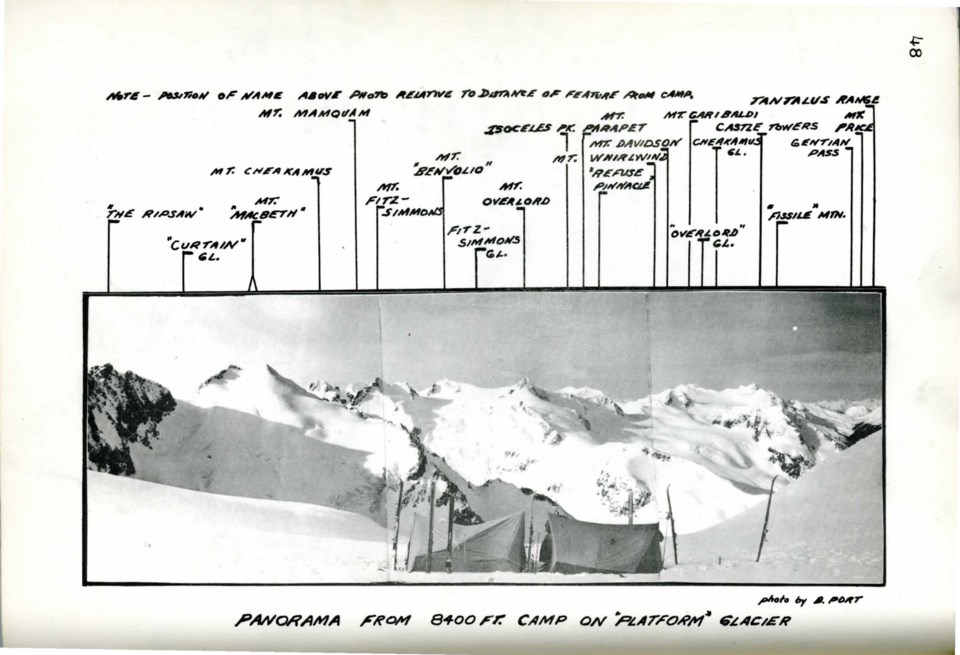The Spearhead Traverse, a popular ski-touring route, was first undertaken by four members of the University of British Columbia’s Varsity Outdoor Club, Alistair MacDonald, Karl Ricker, Bert Port and Chris Gardner, in 1964. The four were approaching the head of the Spearhead Range by the fifth morning, breezing across both the Ripsaw and Naden glaciers and arriving at Couloir Ridge where their easy progress was halted by difficult terrain. At this point, the group had reached Mount Macbeth and Naden Pass, considered to be the limit between the Spearhead and Fitzsimmons ranges. Falling back to their original position, the party members utilized their crampons to descend onto Iago Glacier and get around the head of the valley.
Despite their extensive preparations, the group’s map of the region from 1928 falsely rendered the south side of Mount Iago as too steep to climb, when in reality the mountain face had not only one, but two skiable slopes. This cartography error led the party astray, forcing them around the Diavolo Peak icefall before ascending and setting up camp on the newly christened “detour ridge.” In retrospect, the group proposed that, for future expeditions, a couple of days could be shaved off by following a different route along Naden and Macbeth glaciers.
The next day, the group descended onto Diavolo Glacier, before proceeding to the col between Mount Benvolio and Mount Fitzsimmons, and adopting their strategy of splitting the party to bag both peaks before reconvening at the top of Fitzsimmons Glacier. From there, a slow ascent up the slopes of Overlord Mountain and onto Overlord Glacier ended with the group settling down at Panorama Camp.
Due to heavy clouds, the group set off at noon the next day, splitting up for the third time and bagging both Whirlwind and Fissile peaks before meeting up again at the col. The weather began to worsen, and the party quickly skied down to Russet Lake. In later years, the BC Mountaineering Club would build one of the first gothic arch huts in the region, the Himmelsbach Hut, which was completed near the shores of Russet Lake in 1968 and was just recently relocated and replaced by the Kees and Claire Memorial Hut in 2019.
At this point, the group had gotten below the clouds, allowing them to continue beyond Singing Pass onto the flanks of Whistler Mountain. Despite being so close to their goal, the weather conditions worsened and halted any progress for a day and a half.
The party finally managed to set off at noon the next day, making their way up Whistler Mountain and bagging the peak, before hastily skiing down in heavy snow in order to barely catch the train departing Rainbow Station to Squamish. The first Spearhead Traverse expedition was able to complete the trek in nine days, and concluded that the route would serve future backcountry skiing well for many years to come.
The Spearhead remains a popular route, and can now be routinely completed in a day, with most parties opting to complete the route between two to three days. In 2013, speedsters Eric Carter and Nick Elson completed the traverse in a blistering three hours and 10 minutes.
Read Part 1 in the July 28 issue of Pique.




